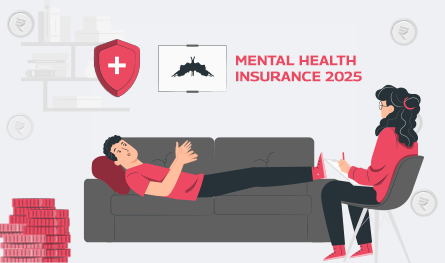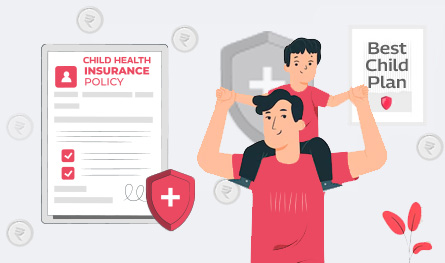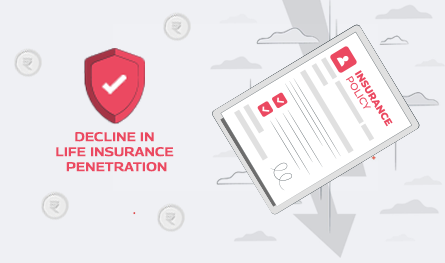Related Articles
 Jan 08, 2025
Jan 08, 2025
Is Varicose Vein surgery covered under the health insurance policy in India
 Health Insurance
Health Insurance

Not long ago, talking about mental health and therapy felt taboo. Now? It’s becoming as normal—and necessary—as your annual health checkup. And rightly so. In 2025, your mental well-being is not just a personal priority – it is essential for you and everyone else you meet in your day-to-day life. As more and more insurance companies are finally acknowledging this fact, mental health insurance is stepping into the spotlight.
If you have been waiting for your health insurance policy to support your emotional health, this might be the year you finally get what you need. This article will be your guide to mental health insurance coverage – what it covers, what you need to look out for and how you can maximise your coverage.

Let’s face it: stress, anxiety, and burnout – they are no longer exceptions; they come as a part of modern life. But that does not mean you have to carry the burden alone. Just like you would get help for a sprained ankle or high blood pressure, you deserve care for emotional strain, too.
In 2025, insurance companies are finally catching up with the real world. Beyond individual empowerment, this shift also normalises therapy. When insurers treat mental health seriously, it signals that emotional wellness isn’t something to be hidden – it is something to be protected.
Plus, from a purely practical point of view, untreated mental health issues can worsen physical health, leading to more hospitalisations and higher healthcare costs in the long run. By covering mental health proactively, insurers are protecting both your well-being and their bottom lines. It is a complete win-win.
Imagine being able to book therapy because you need it, not because you’ve done the math on your wallet. Until recently, mental health therapy was often considered non-essential or was excluded from insurance coverage altogether. But insurers are finally seeing the light. One of the most encouraging developments in recent years is the growing availability of dedicated therapy coverage. Now, more policies include:
Even better, some companies are tying therapy directly to stress-related physical conditions, like hypertension, insomnia, or heart conditions, acknowledging how emotional well-being impacts physical health. If you are managing stress at work or coping with the loss of a loved one, your therapy sessions could be claimable.
However, it is recommended to keep an eye out for documentation requirements. Often, you will need a referral or diagnosis from a psychiatrist to get your claims processed smoothly.
Many insurance companies are no longer just covering mental health reactively; they are building wellness into their policy structure. Here’s how:
These innovations mean you are not just supported when you are struggling but actively encouraged to stay emotionally well.
You need to understand that not all policies are built equally, and mental health benefits come with their fair share of conditions. Here is a list of things you need to look out for:
Knowing these details can help you avoid unwanted surprises in case of emergencies.
Here is a list of pointers that can help you make the most of your mental health insurance:

Paybima Team
Paybima is an Indian insurance aggregator on a mission to make insurance simple for people. Paybima is the Digital arm of the already established and trusted Mahindra Insurance Brokers Ltd., a reputed name in the insurance broking industry with 17 years of experience. Paybima promises you the easy-to-access online platform to buy insurance policies, and also extend their unrelented assistance with all your policy related queries and services.


Let’s be honest – life insurance planning isn’t exactly someone’s weekend hobby. It is the financial equivalent of flossing: we understand its importance, but we tend to put it off. But somewhere between balancing work and life, you might realise you need to have a solid plan in place – just in case.


Getting older is a mixed bag. On one hand, you have experience, wisdom, and the ability to spot and avoid a telemarketing scam from a mile away. On the other hand, your back makes creaking noises when you get out of bed.


As any parent will tell you, kids come with two things: endless energy and absolutely no sense of self-preservation. From scaling chairs and tables like mountaineers to catching germs within a five-mile radius, kids really know how to keep everyone on their toes. Now, it is understandable you are worried. As much as we would love to wrap our small ones in cotton wool and keep them safe forever, real life has other plans.


When was the last time you thought about getting a life insurance policy? If your answer is “I will get to it someday”, you are not alone. Despite India growing as one of the fastest expanding economies, life insurance penetration across the nation has remained surprisingly low. Life insurance penetration fell slightly to 2.8% in FY24, down from 3% in the previous year.

Let’s be honest, your health does not come with a warning sign. One moment you are enjoying your breakfast, and maybe in the next, you're staring at a hospital bill that looks like a phone number. This is why having solid medical insurance is not a luxury anymore. It is your financial shield, your plan B, and your peace of mind, all rolled into one.
